
- The Architectural Marvel of Sagrada Familia: A Deep Dive
- Exploring the History and Significance of Sagrada Familia in Barcelona
- Top Reasons to Visit Sagrada Familia: A Barcelona Icon
- Understanding the Symbolism in Sagrada Familia's Design
- Visiting Tips for Sagrada Familia: What You Need to Know
- The Impact of Antoni Gaudí on Modern Architecture: A Look at Sagrada Familia
Barcelona is a city rich in history, culture, and architectural wonders, and among its many treasures lies the stunning Sagrada Familia. This iconic basilica, designed by the renowned architect Antoni Gaudí, captivates visitors with its intricate facades and towering spires that seem to touch the sky.
As one of the most recognizable landmarks in the world, The Enchanting Sagrada Familia: A Must-See Gem in Barcelona, Spain promises an unforgettable experience for anyone who steps inside. From its mesmerizing stained glass windows to the innovative design elements, the Sagrada Familia is a testament to Gaudí's genius and a true masterpiece of modernist architecture.
The Architectural Marvel of Sagrada Familia: A Deep Dive
The Sagrada Familia stands as a testament to architectural innovation, blending Gothic and Art Nouveau styles in a mesmerizing display. Its unique structure is characterized by organic forms and intricate details, making it a prime example of modernist architecture. Gaudí's vision goes beyond aesthetics, as he meticulously designed each element to reflect natural forms, harmonizing art with nature.
One remarkable feature of the Sagrada Familia is its asymmetrical towers, each representing different biblical figures. The basilica is planned to have 18 towers, symbolizing the Twelve Apostles, the Virgin Mary, the four evangelists, and Jesus Christ. This approach not only showcases Gaudí's creativity but also serves a deeper religious significance.
Visitors are often captivated by the intricate facades of the Sagrada Familia, each telling a different story. The Nativity Facade, for instance, is adorned with sculptures that celebrate the birth of Christ, while the Passion Facade conveys the anguish of the crucifixion. These artistic choices reflect Gaudí's intent to create a narrative experience, inviting observers to engage on a spiritual level.
In addition to its artistic components, the Sagrada Familia is also an engineering marvel. The use of hyperboloid structures allows for an unprecedented height and stability, showcasing cutting-edge techniques of Gaudí's time. With ongoing construction that began in 1882, the basilica is set to be completed in the coming years, promising to further enrich Barcelona's skyline and architectural heritage.
Exploring the History and Significance of Sagrada Familia in Barcelona
The history of the Sagrada Familia is as intricate as its architecture. Construction began in 1882 under architect Francisco de Paula del Villar, but it was Antoni Gaudí who took over the project in 1883 and transformed it into a visionary masterpiece. His dedication to the basilica was profound; Gaudí devoted the last 15 years of his life exclusively to this project, emphasizing its spiritual and artistic significance.
Throughout its construction, the Sagrada Familia has witnessed significant historical events, including the Spanish Civil War, which led to the destruction of many of Gaudí's original plans and models. Despite these challenges, the project continued, driven by the belief that it represents a symbol of faith and cultural identity for Barcelona. The basilica is now recognized as a UNESCO World Heritage Site, further solidifying its importance on both a national and global scale.
The Sagrada Familia's architectural significance lies not only in its design but also in its symbolism. Each facade and interior detail serves a purpose, telling a story that reflects the life of Jesus Christ and the teachings of Christianity. Notably, the Passion Facade depicts the crucifixion with stark realism, while the Nativity Facade celebrates the joy of birth, creating a powerful narrative that resonates with visitors.
With a projected completion date set for 2026, the centenary of Gaudí's death, the Sagrada Familia continues to evolve. This enduring masterpiece stands as a testament to human creativity and dedication, promising to inspire future generations. Visitors are not only dazzled by its beauty but also invited to explore the rich tapestry of history and devotion woven into every stone of this iconic structure.
Top Reasons to Visit Sagrada Familia: A Barcelona Icon
One of the top reasons to visit the Sagrada Familia is its stunning architectural design, which seamlessly blends elements of Gothic and Art Nouveau styles. The basilica's innovative structure and intricate details make it a prime example of modernist architecture, showcasing Antoni Gaudí's unique vision. Visitors are often left in awe of the organic forms that mimic nature, creating a visual feast that is unparalleled.
Additionally, the Sagrada Familia offers a profound spiritual experience. Each of its facades tells a distinct story, allowing visitors to engage with the life of Jesus Christ on a deeper level. Highlights include:
- Nativity Facade: Celebrates the birth of Christ with its joyful sculptures.
- Passion Facade: Conveys the anguish of the crucifixion with stark realism.
- Glory Facade: Represents the final glory of Jesus and the way to heaven.
Another reason to explore this iconic basilica is its ongoing construction, which has been in progress since 1882. This remarkable journey not only reflects the dedication of countless artisans but also highlights the evolution of architectural techniques over time. The anticipated completion date in 2026 will mark a significant milestone in both Gaudí's legacy and Barcelona’s cultural heritage.
Finally, the Sagrada Familia is an UNESCO World Heritage Site, emphasizing its global importance. Visitors can appreciate not just its beauty but also its role as a symbol of faith and cultural identity for Barcelona. The combination of history, artistry, and spirituality makes it a must-see destination for anyone traveling to Spain.
Understanding the Symbolism in Sagrada Familia's Design
The design of the Sagrada Familia is deeply infused with symbolism, reflecting Gaudí's vision of a spiritual journey. Each element, from the towering spires to the intricate sculptures, serves a specific purpose, intended to guide visitors through the life of Christ. For example, the basilica's asymmetrical towers represent various biblical figures, creating a visual representation of spiritual hierarchy that invites reflection and contemplation.
Furthermore, Gaudí's choice of materials and colors plays a vital role in conveying deeper meanings. The use of natural light through the stained glass windows enhances the meditative experience inside the basilica. As sunlight filters through, it transforms the interior space, illuminating the stories depicted on the walls and inviting visitors to engage in a dialogue with the divine.
The facades of the Sagrada Familia are not merely decorative; they serve as a narrative canvas. Each facade encapsulates key moments of Jesus's life, inviting reflection on themes such as birth, sacrifice, and resurrection. The Passion Facade stands out with its stark depiction of suffering, while the Nativity Facade celebrates the joy of Christ's arrival, showcasing the duality of human experience.
Lastly, the overall structure of the basilica embodies Gaudí's philosophy of integrating architecture with nature. By mimicking organic forms and employing innovative techniques, he created a space that harmonizes with the natural world, fostering a sense of serenity and connection to the divine. This intricate interplay of symbolism and design makes the Sagrada Familia not just an architectural wonder, but a profound spiritual experience for all who visit.
Visiting Tips for Sagrada Familia: What You Need to Know
When planning your visit to the Sagrada Familia, it is crucial to book tickets in advance. The basilica is one of the most popular attractions in Barcelona, often drawing large crowds. Purchasing your tickets online not only saves time but also guarantees you access to this magnificent site. Consider selecting a timed entry to avoid long waiting times and ensure a more enjoyable experience.
Another important tip is to choose the right time for your visit. Early morning or late afternoon slots tend to be less crowded, allowing you to appreciate the intricate details of Gaudí's masterpiece in a more serene atmosphere. Additionally, visiting during weekdays rather than weekends can further enhance your experience, as fewer visitors tend to come during these times.
While exploring the Sagrada Familia, don’t miss the opportunity to take a guided tour. Knowledgeable guides can provide in-depth insights into the history and symbolism of the basilica, enriching your understanding of Gaudí's vision. Moreover, audio guides are available for those who prefer to explore at their own pace while still gaining valuable information about the architectural wonders surrounding them.
Lastly, consider spending some time in the surrounding area after your visit. The gardens and nearby parks offer a lovely setting to relax and reflect on your experience. Be sure to take photographs of the basilica from different angles, as the play of light and shadow enhances its beauty throughout the day. This combination of careful planning and thoughtful exploration will undoubtedly make your trip to the Sagrada Familia a memorable one.
The Impact of Antoni Gaudí on Modern Architecture: A Look at Sagrada Familia
Antoni Gaudí's influence on modern architecture is profoundly exemplified through the design of the Sagrada Familia. His innovative approach combined structures with organic forms, resulting in a style that defies conventional architectural norms. Gaudí's integration of natural elements not only redefined aesthetics but also inspired future architects to explore the relationship between structure and nature.
One of the most impactful aspects of Gaudí's work at the Sagrada Familia is his pioneering use of geometry and light. By employing hyperbolic paraboloids and catenary arches, Gaudí achieved both beauty and structural stability. This architectural language paved the way for new possibilities in building design, influencing modern architects who seek to blend functionality with artistic expression.
Furthermore, the Sagrada Familia serves as a case study in the importance of sustainability in architecture. Gaudí emphasized the use of local materials and natural light, showcasing an early understanding of eco-friendly design principles. His vision encourages contemporary architects to prioritize environmental considerations, making his legacy relevant in today's architectural discourse.
In summary, Antoni Gaudí’s work on the Sagrada Familia not only represents a unique artistic vision but also marks a significant turning point in the evolution of modern architecture. It embodies a harmonious blend of art, spirituality, and innovation, inspiring generations of architects to think beyond traditional boundaries and embrace a more holistic approach to design.
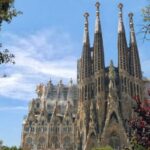 Explore the Majestic Sagrada Familia in Barcelona, Spain: Buy your Tickets Now!
Explore the Majestic Sagrada Familia in Barcelona, Spain: Buy your Tickets Now!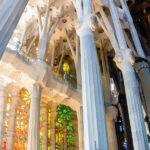 Discover the Breathtaking Staircase of the Sagrada Familia in Barcelona
Discover the Breathtaking Staircase of the Sagrada Familia in Barcelona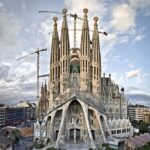 Discover the Fascinating Facts about Sagrada Familia in Barcelona, Spain
Discover the Fascinating Facts about Sagrada Familia in Barcelona, Spain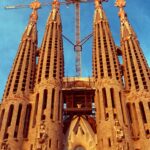 Sagrada Familia: Epicenter of Barcelona
Sagrada Familia: Epicenter of Barcelona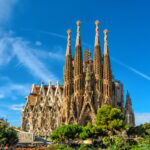 The Majestic Sagrada Familia in Barcelona: A Guide in English
The Majestic Sagrada Familia in Barcelona: A Guide in EnglishIf you want to know other articles similar to The Enchanting Sagrada Familia: A Must-See Gem in Barcelona, Spain you can visit the category WHERE YOU CAN GO.
Deja una respuesta

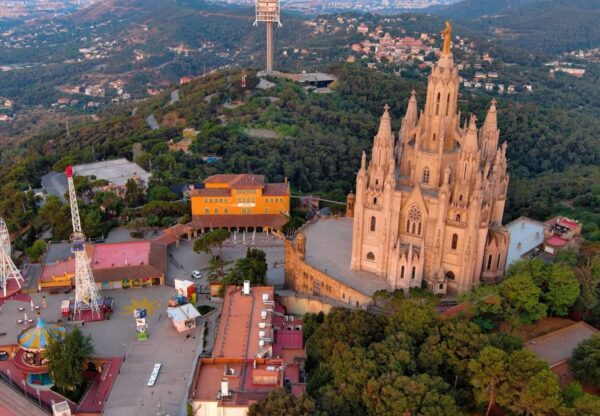








Read more!